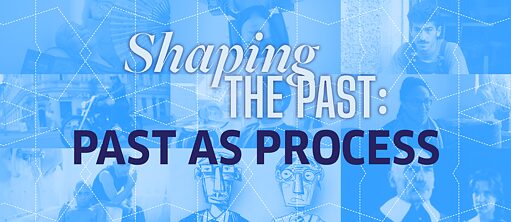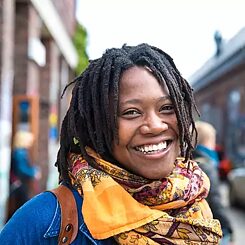SHAPING THE PAST: PAST AS PROCESS
Curated by Karina Griffith, this virtual film program is presented as part of the Goethe-Institut North America's project Shaping the Past.
Films are available to viewers in the USA, Canada, and Mexico.
Statement of Curator:
“... concepts of history are always contested, always changeable, determined by the now as much as they shape our understanding of this now.”
- Fatima El-Tayeb, Undeutsch (31)
Past as Process is a program of nine films that trouble the notion of fixed histories. The Gestalt of history is not a figure, it is a process of configuration. This process of shaping the past is sculptural, artistic, and creative, which is why film lends itself so well to our understanding of time and memory.
As a structure of knowing, the past is built on a foundation of the present and the future; all of our past-oriented epistemologies are framed on shifting ground. This program sits where the telling and the knowing of histories are connected to time and place. As soon as we write history – when we hold it in one book or language or perspective, the present-tense calls for a rupture. Like an ornate clay pot that explodes into a hundred pieces in the kiln, it is the tiny bubbles in the clay, the incongruities in the construction, that destroy the form.
These films are the shards in the kiln. Each is part of a larger telling and simultaneously whole. The films in this program break the mold of not only representations of content, but of textual form, aesthetics, and style. Animation in Memory Boxes (2019) and Home? (2018) illustrates effective archiving and tags the dominant visual narrative to literally inscribe another account. Roots Germania (2007) and Roan (2019) explore the idea of “person as monument” in the family. The documentaries Duvarlar - Mauern - Walls (2000) and Past, Present, Tense (2015), made in Berlin, reflect the active listening of oral histories. The musical form of Zurück auf LOS! (2000) takes the telling into the fantastical, to share affective aspects one can only reach tonally. Each film visualizes memory, past, and history in forms that are shifting, moving, and in transformation: a grandmother, an apothecary cabinet, East German Schlager covers. Separated into four categories, the films demonstrate the artistry of shaping the past in their form (i.e. Animation), approaches (speculative and collective), and untraditional archives (focus on family).
These nine films activate diverse epistemologies and demonstrate that history takes shape in the present, but we also carve away from the past to form our ideas of the future. They show that the past is not something to look back on or to place safely on a shelf. The past is the time at the pottery wheel, always spinning and always shaping our presents and our futures.
Karina Griffith
May 2021
Berlin, Germany
Karina Griffith’s artistic and curatorial practice explore the themes of fear and fantasy, often focusing on how they relate to belonging. She is a PhD candidate at the University of Toronto’s Cinema Studies Institute where her research on Black authorship in German cinema interacts with theories of affect theory, intersectionality and creolization. Griffith holds a lecturer position at the Institute for Art in Context at the Berlin University of the Arts (UdK). Griffith has recently done curatorial work for the Latitude Festival 2020 and for the Berlinale Forum in 2021.
Shaping the Past / Gestaltung der Vergangenheit is a project of the Goethe-Instituts and Pop Ups in North America (Canada, USA, and Mexico) that connects with and builds on the work of emerging leaders of local, national, and transnational movements to remember through reflection and with urgency. It is a partnership between the Goethe-Institut, the Monument Lab, and the Federal Agency for Civic Education (Bundeszentrale für politische Bildung / bpb).
-
06/21
- 06/24/2021 -
06/24
- 06/27/2021 -
06/27
- 06/30/2021 -
07/01
- 07/04/2021 -
06/27
- 07/31/2021 -
07/01
- 07/31/2021

